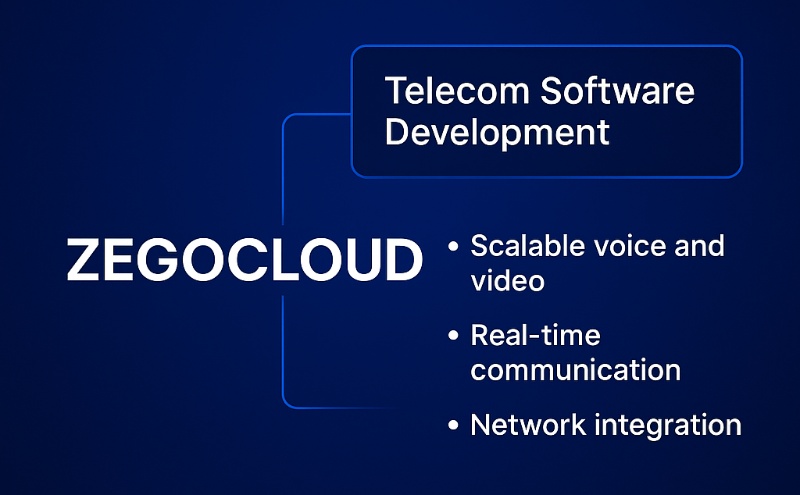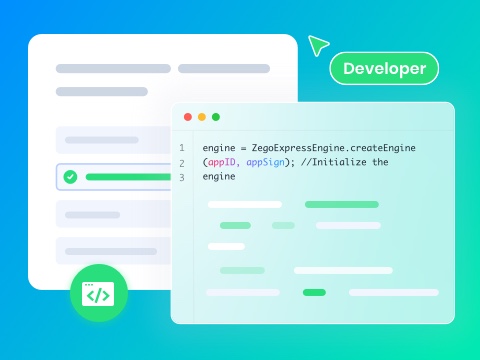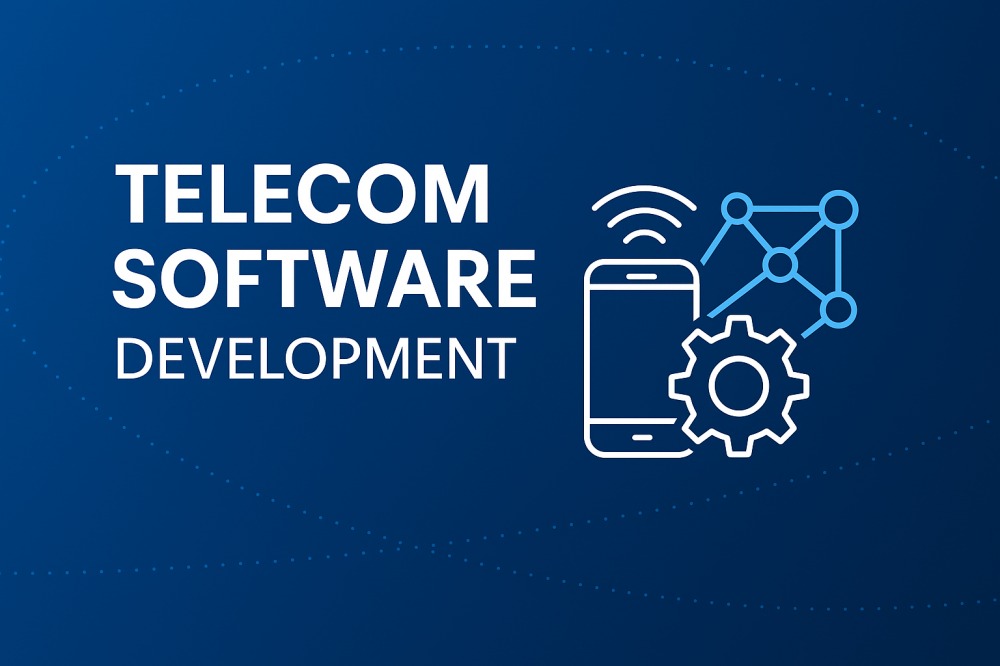To determine how we connect through calls, messages, and the internet, telecom software development plays the leading role. As the telecom industry grows rapidly with technologies like 5G and cloud networks, the need for reliable and scalable software is higher than ever. Therefore, in this article, we’ll explore the emerging trends of telecommunication development, its key features, and why it matters for modern communication systems.
Telecommunication Software Marketing Trends
As telecom software development companies are evolving rapidly, understanding current market trends is crucial, so read the following key statistics:
- The SDN market is projected to grow from $16B in 2024 to $59B by 2032, at a CAGR of ~20%, boosted by AI, cloud, and 5G adoption.
- 5G infrastructure will generate a return of $129.65 by 2025 and will reach $114 trillion by 2034.
- 50% of telecom operators are currently realizing benefits from AI/generative AI, up from ~25% just a year ago.
- 49% of telecom firms are actively implementing or evaluating generative AI, and 84% anticipate revenue gains from it.
- 60% of the $78B telecom software market is now powered by integrated software stacks (orchestration, billing, SDN).
- Furthermore, the telecom cloud market is growing from $40.7B in 2024 to $325.8B by 2033, at a CAGR of nearly 26%.
- Over 45% of telecom operators are investing in SDN and cloud-native technology companies.
Benefits of Telecom Software Development
Telecom software development not only provides technical capability; it changes the way telecom providers conduct business, grow, and deliver to customers. Therefore, to know more about it, the following are 5 major advantages that show its increasing significance in the industry:
- Better Operational Efficiency: Automation of routine network and customer service processes will save manual labor and will accelerate the process of resolving issues. Therefore, this simplifies processes and reduces the cost of operations by a significant margin.
- Better Customer Experience: Telecom software development enables rapid onboarding, self-service portals, and individual interactions. Thus, the characteristics enhance customer satisfaction and reduce churn rates.
- Scalable Network Management: This software is SDN, 5G, and IoT compatible, which facilitates its easy scaling with the growth of users and devices. In addition, it increases the performance of the network as it becomes busy.
- Real-Time Analytics and Monitoring: The integrated analytics help in tracking the performance of the networks, determining anomalies, and diagnosing future failures. That way, a data-based solution can make decisions within a short time and avoid preventative maintenance.
- More Rapid Time-to-Market of New Services: The custom telecom software development services enable operators to deploy, test, and update new services in a short time. This flexibility also helps operators stay competitive in a rapidly evolving digital market.
Steps of Telecom Software Development
Due to the emergence of 5G, VoIP, and IoT, the process requires a high level of scalability, resiliency, and real-time responsiveness. Therefore, the following are the key steps of developing a potent telecom solution that telecom software development services must consider:
Step 1. Requirement Analysis & Market Research
Begin with the determination of business objectives, user requirements, and market trends in the telecom industry. This also entails the specification of the core capabilities such as real-time messaging, billing systems, and user roles, among others. In addition, regulatory compliance, such as data security laws, should also be mapped out up front.
Step 2. UI/UX Design & Feature Planning
After setting this foundation in telecom software development, make sure that it has user and administrator-friendly interfaces and that it is easy to navigate. Moreover, design wireframes for dashboards, call logs, performance graphs, etc. In the process, you also have to design voice/video, analytics, and third-party integrations features according to the user flow.
Step 3. Choosing Tech Stack & Real-Time Integration
In addition, choose a powerful technology stack such as backend (Node.js, Python), frontend (React, Flutter), and cloud (AWS, Azure). To combine voice/video calls, messaging, and interactive whiteboards, ZEGOCLOUD must be viewed as an option to conduct real-time communication. The SDKs of ZEGOCLOUD also make telecom-grade communication capabilities simple and maintain low latency and high scalability.
Step 4. Backend Development & API Integration
Design secure backend systems to manage routing of traffic, session management, and authentication. Besides, add telecom protocols (including SIP), SMS, number masking, CRM, and billing APIs. In addition, ensure that your software is multi-tenant and supports modular upgrades in case you need to upgrade in the future.
Step 5. Testing, Optimization & Deployment
Finally, perform intensive testing, unit, integration, security, and load to verify the performance in the real world. So, during this testing, debug, refactor, and test the app compatibility with platforms and devices. Thus, after the app is stable, release it and install monitoring tools to monitor usage and uptime.
How Much Will Developing a Telecom Software Cost You
Before diving into telecommunication software development, it’s essential to understand the budget involved. Thus, here’s a detailed breakdown of the estimated cost of developing telecom software based on complexity and features:
| Category | Basic Software (Core Functions Only) | Mid-Level Software (Scalable & Integrated) | Enterprise-Level Solution (Advanced, Real-Time, 5G-Ready) |
|---|---|---|---|
| Estimated Cost (USD) | $30,000 – $70,000 | $70,000 – $150,000 | $150,000 – $500,000+ |
| Development Time | 3 – 5 months | 6 – 9 months | 9 – 15+ months |
| Core Features | User authentication, call logs, and basic billing | CRM, network monitoring, analytics | Real-time communication, 5G/IoT integration, AI-driven operations |
| Platform | Web or Mobile | Cross-platform (Web + Mobile) | Cross-platform with cloud backend & edge support |
| Technology Stack | Basic frameworks & API | Custom backend, VoIP, SDN integration | Microservices, AI/ML, 5G, edge computing, cloud-native stack |
| Team Composition | 2–4 members | 5–7 (PM, developers, QA, UI/UX) | Full team (PM, BA, DevOps, Security, AI/Cloud experts) |
| Maintenance (Yearly) | $5,000 – $10,000 | $10,000 – $20,000 | $20,000 – $50,000+ |
| Suitable For | Startups or MVPs | Growing companies | Telecom enterprises & service providers |
Why ZEGOCLOUD Is Ideal for Telecom Software Development?
As opposed to most telecom software development services, ZEGOCLOUD has telecom-grade real-time communication tools, which are necessary in the development of high-performance telecom software. Thus, the voice, video, and messaging APIs allow developers to add video calling, video conferencing, and interactive chat. It renders lag-free communication, whether you are building a VoIP platform or a customer support solution with an average global latency of 300ms.

Additionally, it offers support to various platforms, and the user interface is simple even in low-bandwidth environments. This is because of abilities, including echo cancellation, noise suppression, and adaptive bitrate streaming. Besides, ZEGOCLOUD is easy to develop, and it has good scalability of apps, well-documented SDKs, and RESTful APIs. It has security options that include end-to-end encryption and GDPR compliance to facilitate the high-security demands of telecom providers.
Moreover, ZEGOCLOUD offers telecom developers such features as whiteboarding and screen sharing. They are most appropriate in customer care centers, online onboarding, training, and internal communications. In addition, it has a flexible pricing model, which allows even startups to develop feature-rich telecom applications. It is constantly updated, has 24/7 technical support, and data centers all around the world, which ensures stability.
Conclusion
In conclusion, the telecom software development is no longer an optional upgrade. Thus, in the market where everything is changing rapidly, the right decisions concerning tools and technologies are vital to make. That is why you must employ such platforms as ZEGOCLOUD. It gives low-latency infrastructure, real-time communication, and SDKs that are easily accessed by developers.
FAQ
Q1: What is telecom software development?
Telecom software development involves creating applications and platforms that support communication networks, including voice, data, and messaging services. It covers areas like network management, billing systems, VoIP solutions, and real-time communication services.
Q2: What is a telecom developer?
A telecom developer is a software engineer who specializes in building and maintaining telecommunication solutions. They work on projects like mobile apps, VoIP platforms, network APIs, billing systems, and integration with telecom hardware and cloud services.
Q3: What are the examples of telecommunication software?
Examples include VoIP services (like Skype), network monitoring tools, telecom billing and CRM systems, call center software, messaging platforms, and APIs for real-time communication such as ZEGOCLOUD.
Q4: What is SAP in telecom?
SAP in telecom refers to SAP software solutions tailored for telecommunications companies. It helps manage billing, customer relationships, network operations, and business processes, improving efficiency and customer experience.
Let’s Build APP Together
Start building with real-time video, voice & chat SDK for apps today!










